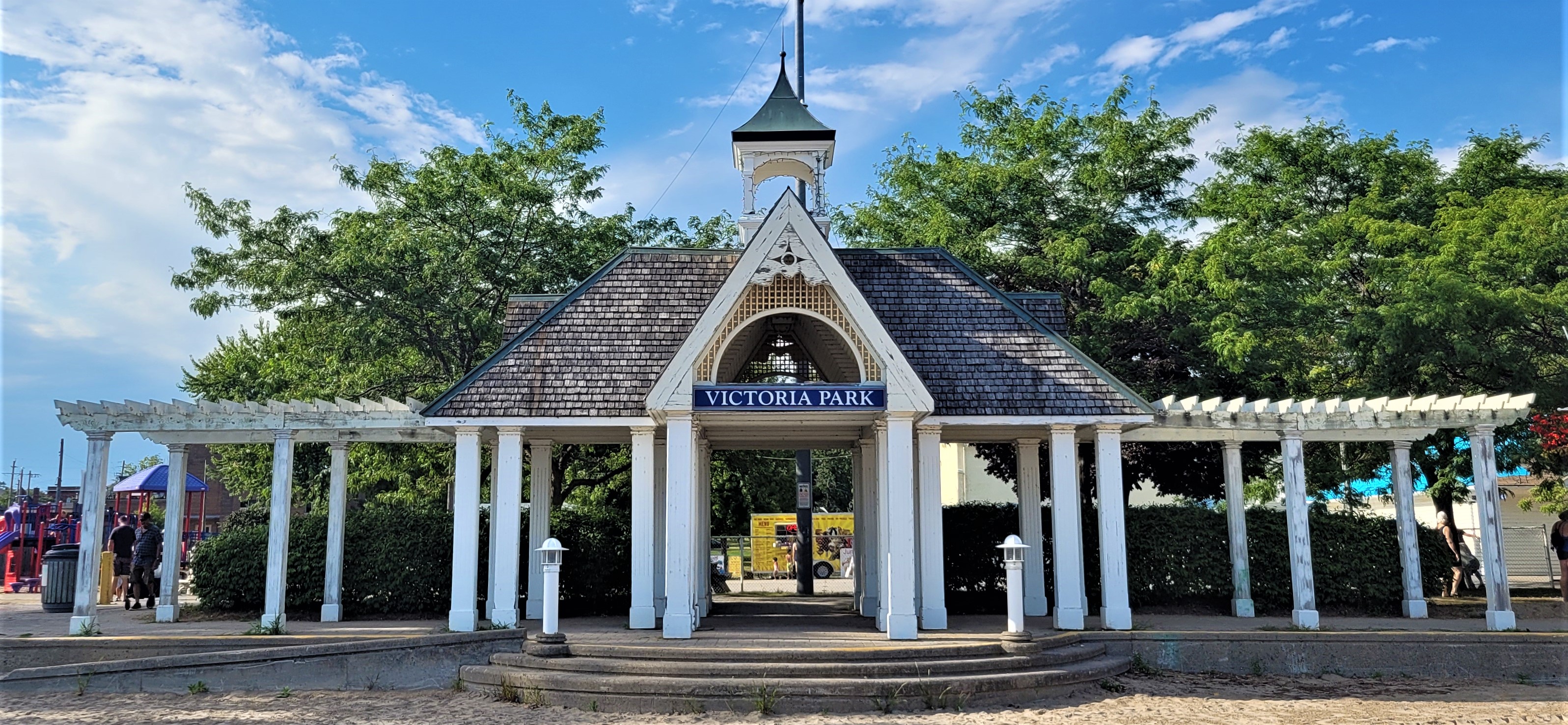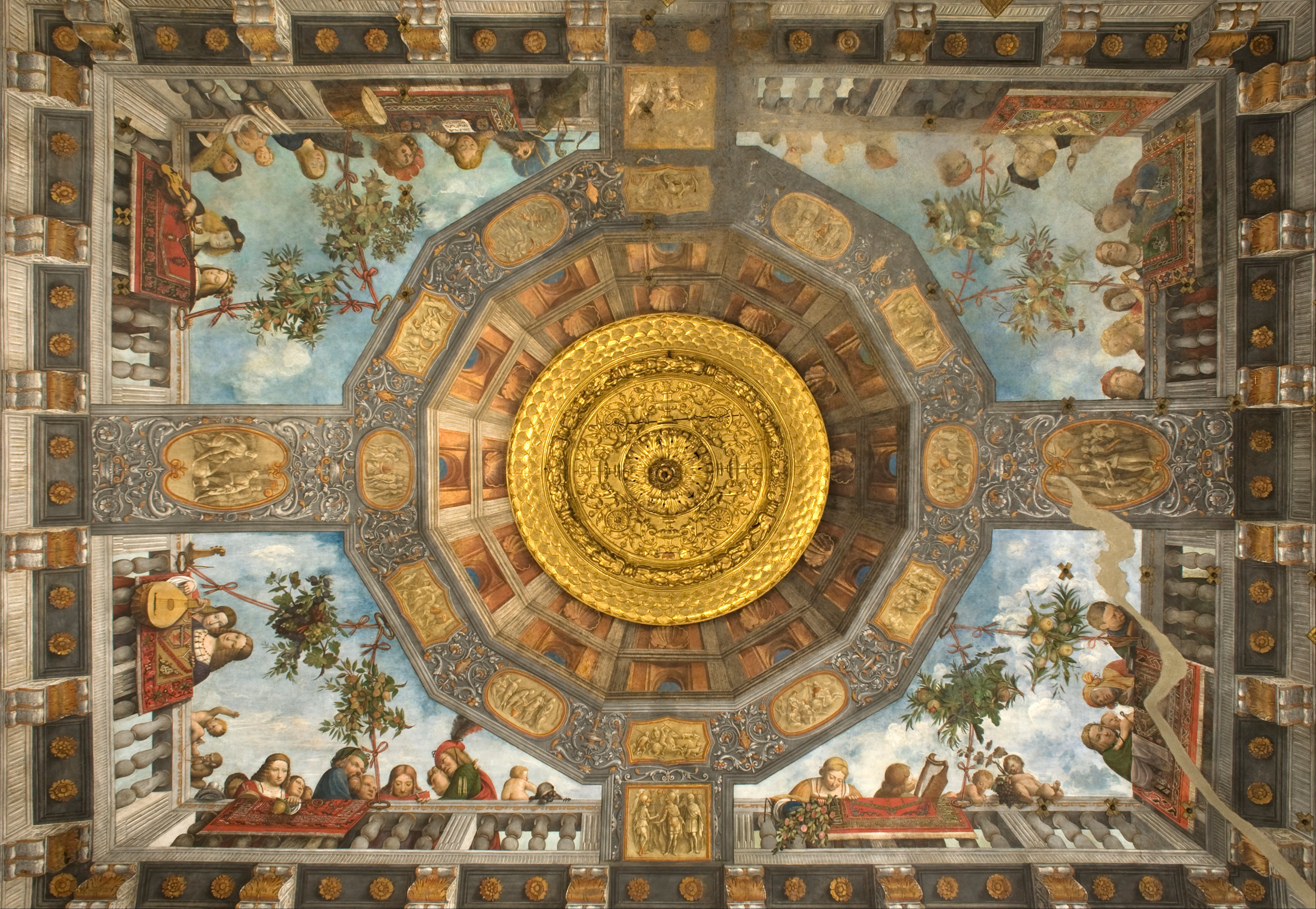|
Victoria Hall (Cobourg)
Victoria Hall is a 19th-century building that serves as the Town Hall and multi-functional space in downtown Cobourg, Ontario, Canada. It was built during a time when Cobourg was prospering financially and was believed to be named the capital of Upper Canada. Victoria Hall opened in 1860 and was declared a national historic site in 1959 due to it being a good example of the public edifice of mid-19th century Canada. Architecture Victoria Hall is a neoclassical style building faced with imported Cleveland sandstone and topped with a prominent clock tower. In the 1850s, a design competition was held to determine who would construct the town hall and architect Kivas Tully won. The building's front entrance features a portico with Corinthian columns, a Greco-Roman roofed porch, and a speaker's balcony. The building is an ‘E’ shape and is completely symmetrical. Restoration In 1970–1971, Victoria Hall was declared structurally unsafe and was vacated. The initial cost to creat ... [...More Info...] [...Related Items...] OR: [Wikipedia] [Google] [Baidu] |
Cobourg
Cobourg ( ) is a town in the Canadian province of Ontario, located in Southern Ontario east of Toronto and east of Oshawa. It is the largest town in and seat of Northumberland County. Its nearest neighbour is Port Hope, to the west. It is located along Highway 401 (exits 472 and 474) and the former Highway 2 (now Northumberland County Road 2). To the south, Cobourg borders Lake Ontario. To the north, east and west, it is surrounded by Hamilton Township. History The land which present-day Cobourg occupies was previously inhabited by Mississauga (Anishinaabe-speaking) peoples. The settlements that make up today's Cobourg were founded by United Empire Loyalists in 1798 within Northumberland County, Home District, Province of Upper Canada. Some of the founding fathers and early settlers were Eliud Nickerson, Joseph Ash, Zacheus Burnham and Asa Allworth Burnham. The Town was originally a group of smaller villages such as Amherst and Hardscrabble, which were later named H ... [...More Info...] [...Related Items...] OR: [Wikipedia] [Google] [Baidu] |
Kivas Tully
Kivas Tully, ISO (1820 – 24 April 1905) was an Irish-Canadian architect. Life Born in Garryvacum in County Laois, Ireland, Kivas Tully was the son of John P. Tully, a lieutenant in the Royal Navy, and Alicia Willington. He trained as an architect at the Royal Naval School in London, England, before coming to the Province of Canada in 1844, arriving in Toronto, where he began working at the firm of John George Howard, designing many important buildings throughout southern Ontario. Following Canadian Confederation, Tully joined the Ontario Department of Public Works in 1868. He was appointed the first Ontario Provincial architect (1868–1896) and engineer. He was involved in the supervising of the competition leading to the design of the Ontario Legislative Building at Queen's Park. As the provincial department of public works' chief architect, Tully supervised a series of district courthouses built in northern Ontario. The courthouse at Parry Sound designed in 1871 still form ... [...More Info...] [...Related Items...] OR: [Wikipedia] [Google] [Baidu] |
Neoclassical Architecture
Neoclassical architecture is an architectural style produced by the Neoclassical movement that began in the mid-18th century in Italy and France. It became one of the most prominent architectural styles in the Western world. The prevailing styles of architecture in most of Europe for the previous two centuries, Renaissance architecture and Baroque architecture, already represented partial revivals of the Classical architecture of ancient Rome and (much less) ancient Greek architecture, but the Neoclassical movement aimed to strip away the excesses of Late Baroque and return to a purer and more authentic classical style, adapted to modern purposes. The development of archaeology and published accurate records of surviving classical buildings was crucial in the emergence of Neoclassical architecture. In many countries, there was an initial wave essentially drawing on Roman architecture, followed, from about the start of the 19th century, by a second wave of Greek Revival architec ... [...More Info...] [...Related Items...] OR: [Wikipedia] [Google] [Baidu] |
Trompe-l'œil
''Trompe-l'œil'' ( , ; ) is an artistic term for the highly realistic optical illusion of three-dimensional space and objects on a two-dimensional surface. ''Trompe l'oeil'', which is most often associated with painting, tricks the viewer into perceiving painted objects or spaces as real. Forced perspective is a related illusion in architecture. History in painting The phrase, which can also be spelled without the hyphen and ligature in English as ''trompe l'oeil'', originates with the artist Louis-Léopold Boilly, who used it as the title of a painting he exhibited in the Paris Salon of 1800. Although the term gained currency only in the early 19th century, the illusionistic technique associated with ''trompe-l'œil'' dates much further back. It was (and is) often employed in murals. Instances from Greek and Roman times are known, for instance in Pompeii. A typical ''trompe-l'œil'' mural might depict a window, door, or hallway, intended to suggest a larger room. A version o ... [...More Info...] [...Related Items...] OR: [Wikipedia] [Google] [Baidu] |
James Cockburn (politician, Born 1819)
James W. Cockburn, (February 13, 1819 – August 14, 1883) was a Canadian Conservative politician, and a father of Canadian Confederation. Early life He was born in Berwick-Upon-Tweed on the English– Scottish border and immigrated to Canada with his father, James Cockburn Snr. (1787–1832), mother, Sarah Turnbull (1797–1866) and brother, Adam (1820–1860), at the age of 13. After attending Upper Canada College and Osgoode Hall, he established a law practice in Cobourg, Ontario. Career In the 1850s, Cockburn was elected to the town council. In 1861, he was elected to the Province of Canada's legislative assembly as a Reformer representing Northumberland West. Despite elected as an opponent of the Macdonald - Cartier administration, Cockburn switched allegiances and became a supporter of Macdonald's Liberal-Conservative Party. Cockburn attended the Quebec Conference of 1864 as a supporter of Confederation. After Confederation, he was elected to the new House of Comm ... [...More Info...] [...Related Items...] OR: [Wikipedia] [Google] [Baidu] |
Murdoch Mysteries
''Murdoch Mysteries'' is a Canadian television drama series that premiered on Citytv on January 20, 2008, and currently airs on CBC. The series is based on characters from the ''Detective Murdoch'' novels by Maureen Jennings and stars Yannick Bisson as the fictional William Murdoch, a police detective working in Toronto, Ontario in the late 19th and early 20th centuries. The series was titled ''The Artful Detective'' on the Ovation cable TV network in the United States, until season twelve. Synopsis The series takes place in Toronto starting in 1895 and follows Detective William Murdoch (Yannick Bisson) of the Toronto Constabulary, who solves many of his cases using methods of detection that were unusual at the time. These methods include fingerprinting (referred to as "finger marks" in the series), blood testing, surveillance, and trace evidence. Some episodes feature anachronistic technology whereby Murdoch sometimes uses the existing technology of his time to improvise ... [...More Info...] [...Related Items...] OR: [Wikipedia] [Google] [Baidu] |
Butterbox Babies
''Butterbox Babies'' is a film adapted from the book ''Butterbox Babies'' by Bette L. Cahill, which is based on the true story of the Ideal Maternity Home, a home for unwed pregnant mothers, during the Great Depression and Second World War. The home made millions from the illegal adoption of illegitimate babies during the 1930s and 1940s. Synopsis On the surface, Lila Young (Susan Clark) and her husband William (Peter MacNeill) are devout Christians pursuing their calling of helping young, unwed expectant mothers deliver their babies at the Ideal Maternity Home in Chester, Nova Scotia Chester is a village on the Chester Peninsula, Mahone Bay, Nova Scotia, Canada. The nearby waters of Mahone Bay and its numerous islands are well known for yachting and have made the Chester Yacht Club into a cruising destination. A provi ... during the 1930s and 1940s. The medical community, however, is very skeptical about the safety of the procedures being conducted by Lila and the care ... [...More Info...] [...Related Items...] OR: [Wikipedia] [Google] [Baidu] |
City And Town Halls In Ontario
A city is a human settlement of notable size.Goodall, B. (1987) ''The Penguin Dictionary of Human Geography''. London: Penguin.Kuper, A. and Kuper, J., eds (1996) ''The Social Science Encyclopedia''. 2nd edition. London: Routledge. It can be defined as a permanent and densely settled place with administratively defined boundaries whose members work primarily on non-agricultural tasks. Cities generally have extensive systems for housing, transportation, sanitation, utilities, land use, production of goods, and communication. Their density facilitates interaction between people, government organisations and businesses, sometimes benefiting different parties in the process, such as improving efficiency of goods and service distribution. Historically, city-dwellers have been a small proportion of humanity overall, but following two centuries of unprecedented and rapid urbanization, more than half of the world population now lives in cities, which has had profound consequences for g ... [...More Info...] [...Related Items...] OR: [Wikipedia] [Google] [Baidu] |


_-_facade_on_Piazza_dei_signori.jpg)



